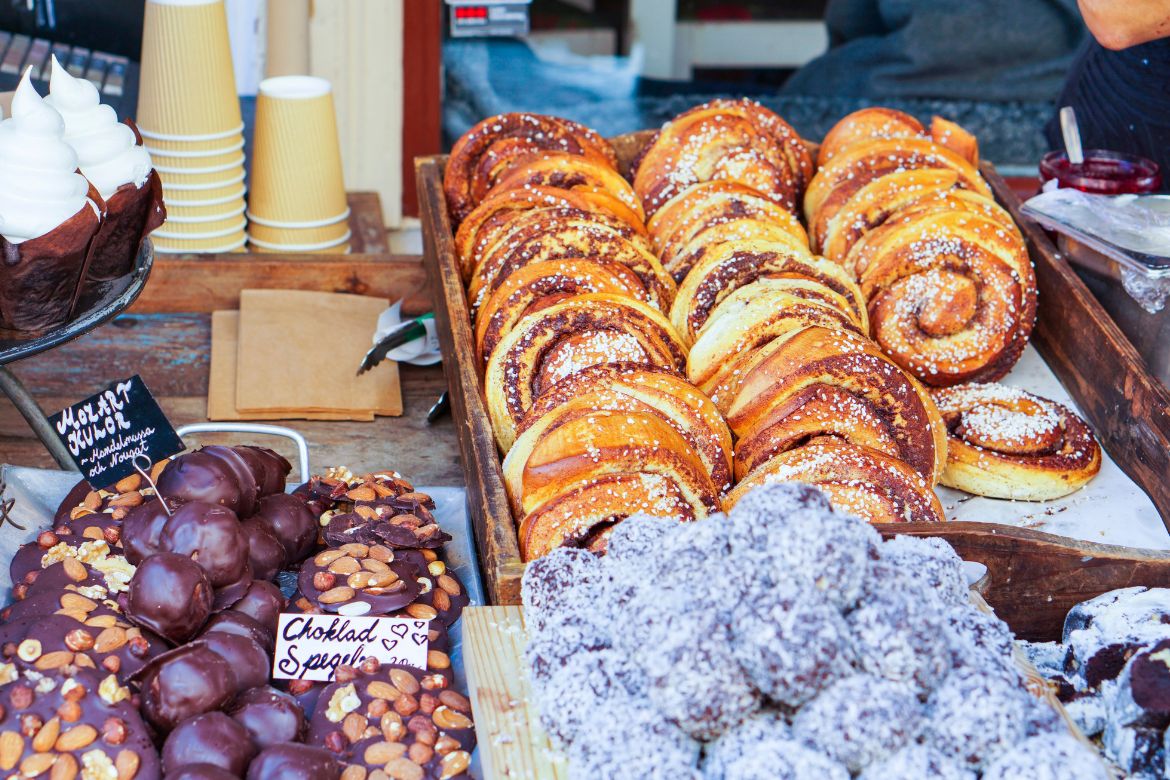The Swedish fika menu is filled with delicious pastries including cardamom buns, chocolate balls, lingonberry rolls, and more.
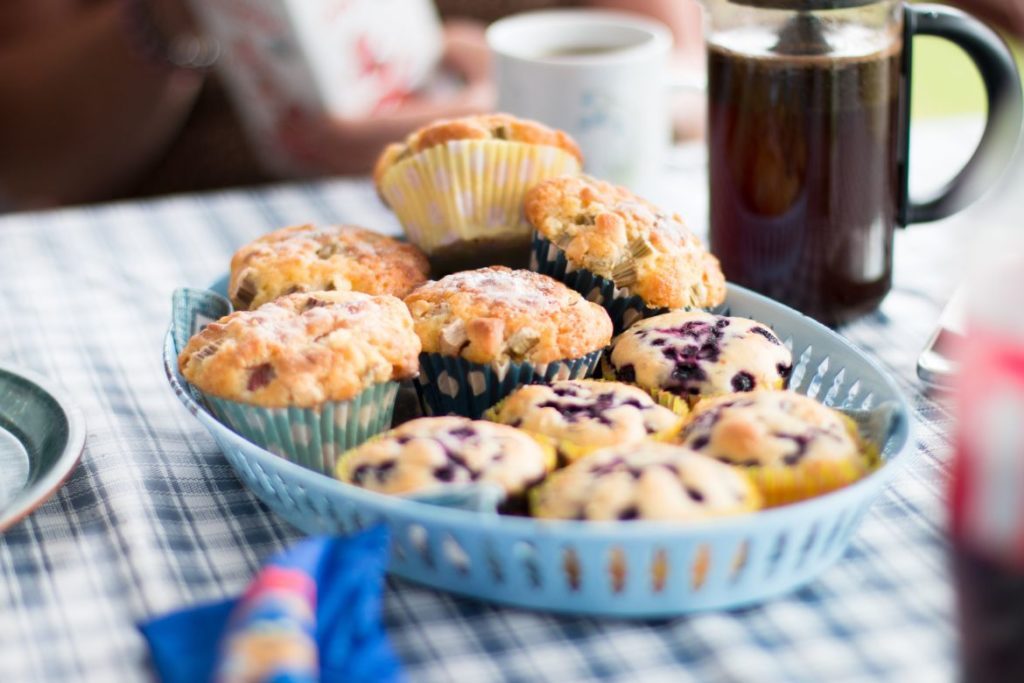
Additional reporting from Joan Carlson Bardin, Cardamom Magazine Research Editor.
Fika (pronounced fee-kah) is a popular Swedish tradition that involves taking a break, slowing down, and enjoying a moment of relaxation and refreshment with loved ones, friends, or even colleagues. In this post, we’ll explore the delicious treats you’ll find on a traditional fika menu, so you can fully experience this delightful Nordic ritual yourself – whether you’re at a trendy fika cafe in Stockholm or in your cozy kitchen at home.
Introducing Fika
I’ve been enjoying fika since I was a little girl, thanks to my Swedish grandmother. Fika was a regular Saturday ritual for us. The rules were simple: no TV (now that would also include cell phones!) and only positive conversation. Just three generations of Swedish women (my grandmother, mom, and me) spending quality time together enjoying some delicious treats. My grandmother loved to bake and always seemed to have a new recipe to try, along with our family favorites. I particularly loved kardemummabullar (cardamom buns) and chokladbollar (chocolate balls), but there are many other options as you’ll see. Since then, I’ve enjoyed fika at some wonderful cafes in both Stockholm and London.
Exploring the Fika Menu: Fikabröd
Now, let’s dive into the heart of Swedish fika by exploring popular items that you can find on a fika menu, known as fikabröd. Fikabröd translates literally to “fika bread” and refers to the pastries, cakes, buns, etc. that are so popular for fika.
Kardemummabullar (Cardamom Buns)
Kardemummabullar boast a delicate dough infused with cardamom (naturally, cardamom is a favorite flavor here at Cardamom Magazine). The buns are typically twisted and generously sprinkled with sugar before baking, resulting in a delightful combination of flavors.
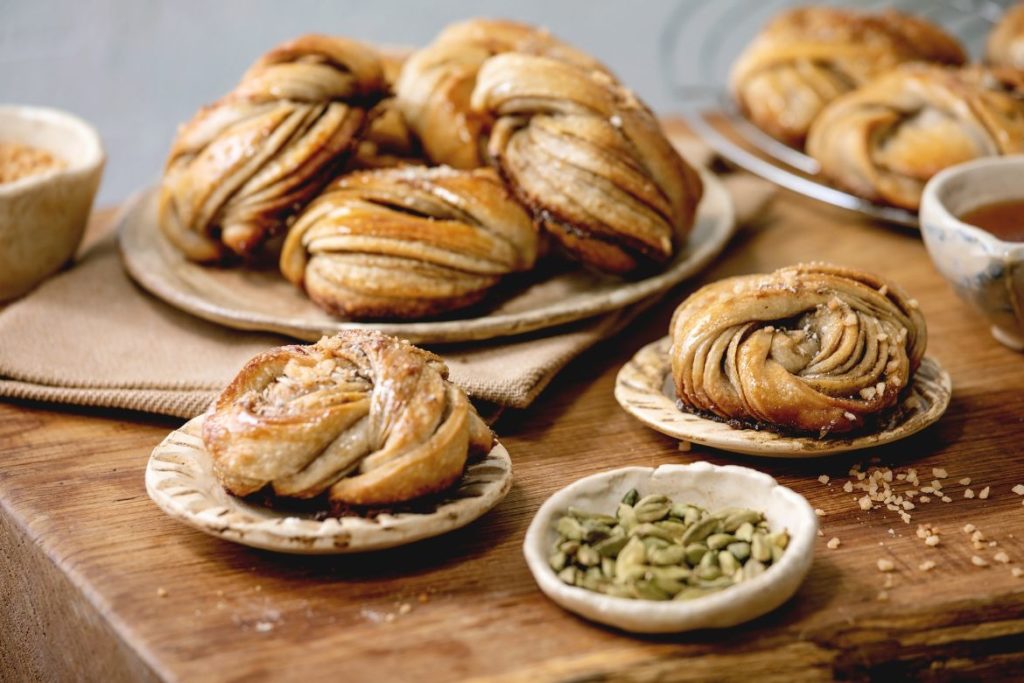
Prinsesstårta (Princess Cake)
This iconic Swedish cake is a feast for both the eyes and taste buds. Layered with sponge cake, raspberry jam, whipped cream, and covered in vibrant green marzipan, Prinsesstårta is a true showstopper.
Chokladbollar (Chocolate Balls)
Chokladbollar are delightful little treats made from oats, cocoa, butter, sugar, and coffee. Rolled into bite-sized balls and coated with coconut flakes, they offer a rich and chocolatey burst of flavor.
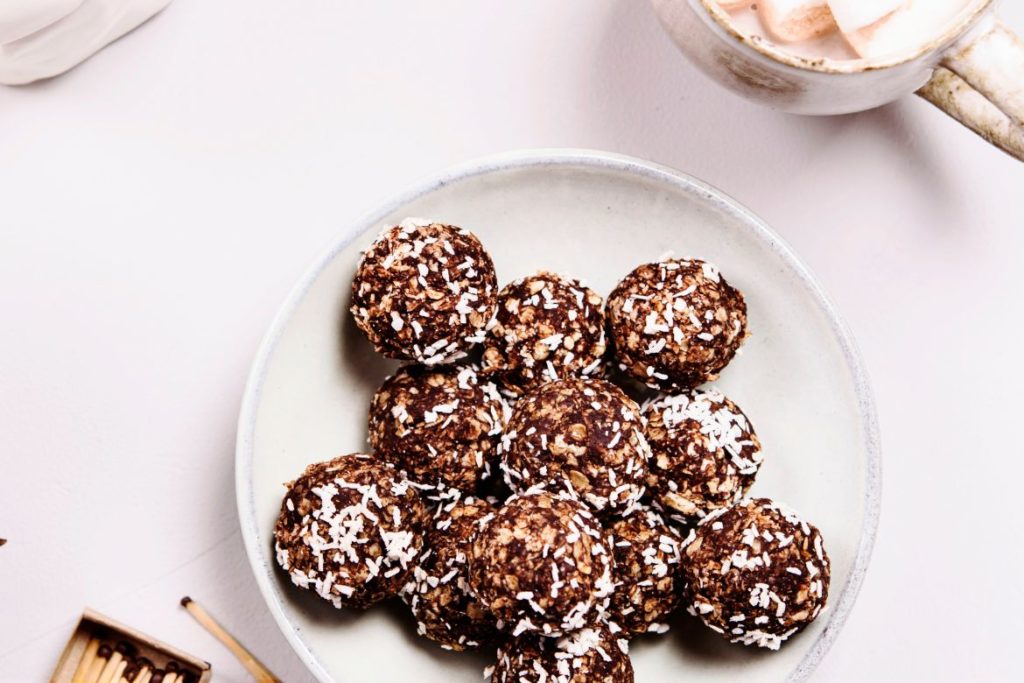
Kladdkaka (Sticky Chocolate Cake)
Kladdkaka is a dense and gooey chocolate cake that is easy to make. It contains butter, sugar, eggs, flour, and cocoa powder. The cake has a thin and slightly cracked crust with a soft and fudgy interior. Kladdkaka gained popularity in the 1970s and is a beloved dessert during fika.
Kanelbullar (Cinnamon Rolls)
These aromatic, golden-brown pastries are a staple of Swedish fika. Soft and fluffy, with a hint of cinnamon and cardamom, kanelbullar are often topped with pearl sugar and enjoyed warm from the oven.
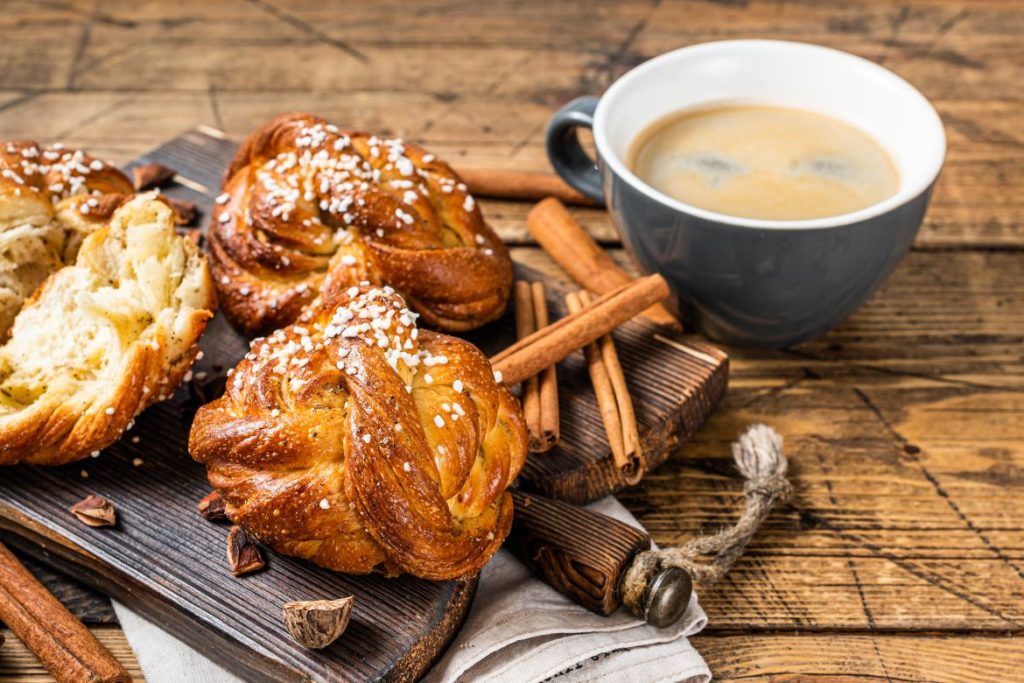
Pepparkakor (Gingerbread Cookies)
Pepparkakor are thin and crispy gingerbread cookies flavored with ginger, cinnamon, cloves, and other spices. They are often shaped into various figures, such as hearts or stars, and decorated with icing. Pepparkakor are a traditional Swedish Christmas treat but are enjoyed year-round during fika.
Vaniljhjärtan (Vanilla Hearts)
Vaniljhjärtan are heart-shaped cookies with a delicate vanilla flavor. The dough is made with butter, sugar, flour, and vanilla sugar. These cookies are often enjoyed during festive occasions and celebrations and are a lovely addition to any fika spread.
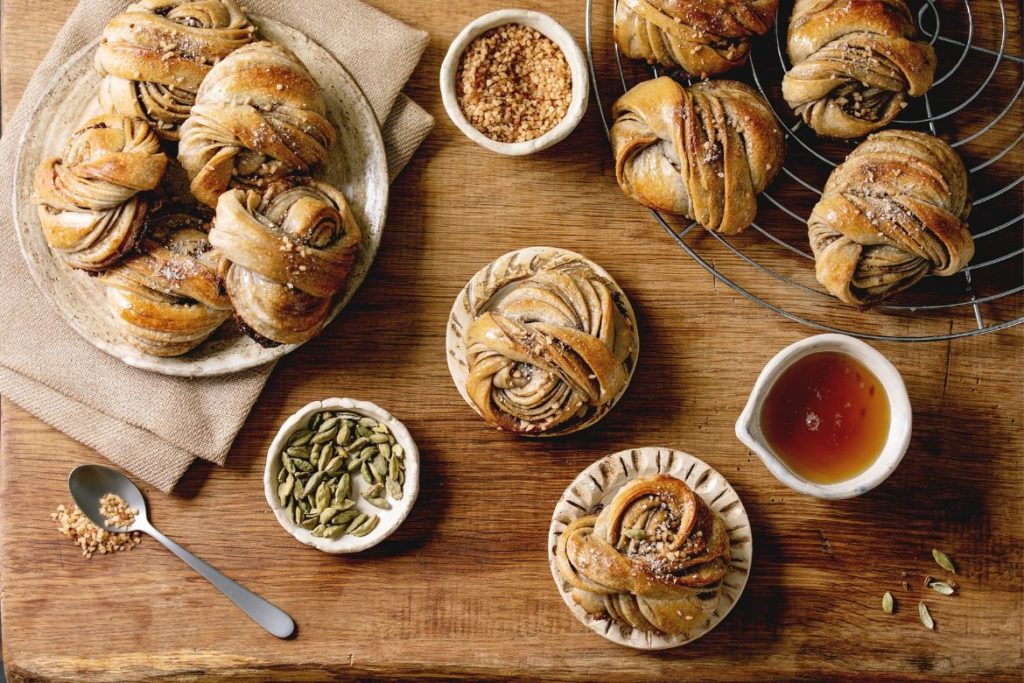
Lingonbullar (Lingonberry Rolls)
Lingonbullar are sweet rolls filled with lingonberry jam. The dough is similar to kanelbullar dough, but instead of a cinnamon filling, lingonberry jam is spread on the dough before rolling it up.
Äppelkaka (Apple Cake)
Swedish Apple Cake, or “Äppelkaka,” features a buttery cake base topped with thinly sliced or diced apples, sprinkled with a blend of cinnamon and sugar for a touch of warmth and sweetness.
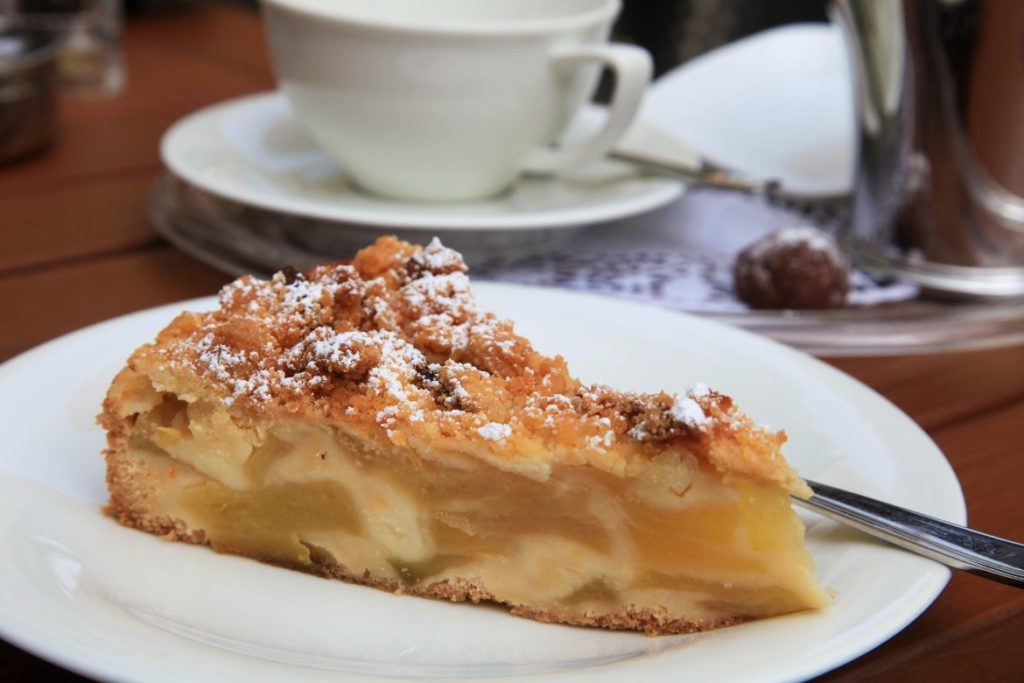
Hallongrottor (Raspberry Thumbprint Cookies)
These charming cookies are a staple of Swedish fika. With a buttery and crumbly texture, they are filled with a dollop of raspberry jam, creating a burst of fruity flavor in every bite.
Havrekakor (Oat Cookies)
Havrekakor are simple and wholesome oat cookies made with rolled oats, butter, sugar, and flour. They have a slightly crunchy texture and a delightful nutty flavor. Havrekakor are often enjoyed with a cup of coffee or tea during fika and are perfect for those seeking a slightly healthier treat.
Smörgås (Open-faced Sandwiches)
Fika isn’t just about fikabröd, or pastries. You can also enjoy savory treats. A quintessential Swedish snack, smörgås is a delicious combination of rye bread, butter, and various toppings. From cured meats and pickled herring to cheese and vegetables, the possibilities are endless.
Coffee is a Swede’s favorite beverage to drink at fika and Swedish cafes are known for delicious coffee. If you would like to try Swedish coffee at home, Gevalia, and Löfbergs, and Arvid Norquist are three of the most popular Swedish coffee brands available worldwide.
Where to Enjoy Fika
The obvious place to experience fika and a delicious fika menu is in Sweden itself . But there are other fika restaurants around the world. And of course, fika at home with family and friends is wonderful too.
Here are just a few great fika cafes:
- Rosendal Garden Cafe (Rosendals Trädgårdskafé) – Djurgården, Stockholm, Sweden
- Cafe Schweizer – Gamla Stan, Stockholm, Sweden (personal favorite!)
- Café Linné – Uppsala, Sweden
- FIKA Café at the American Swedish Institute – Minneapolis, Minnesota
- Fika Swedish Cafe & Bistro – Singapore
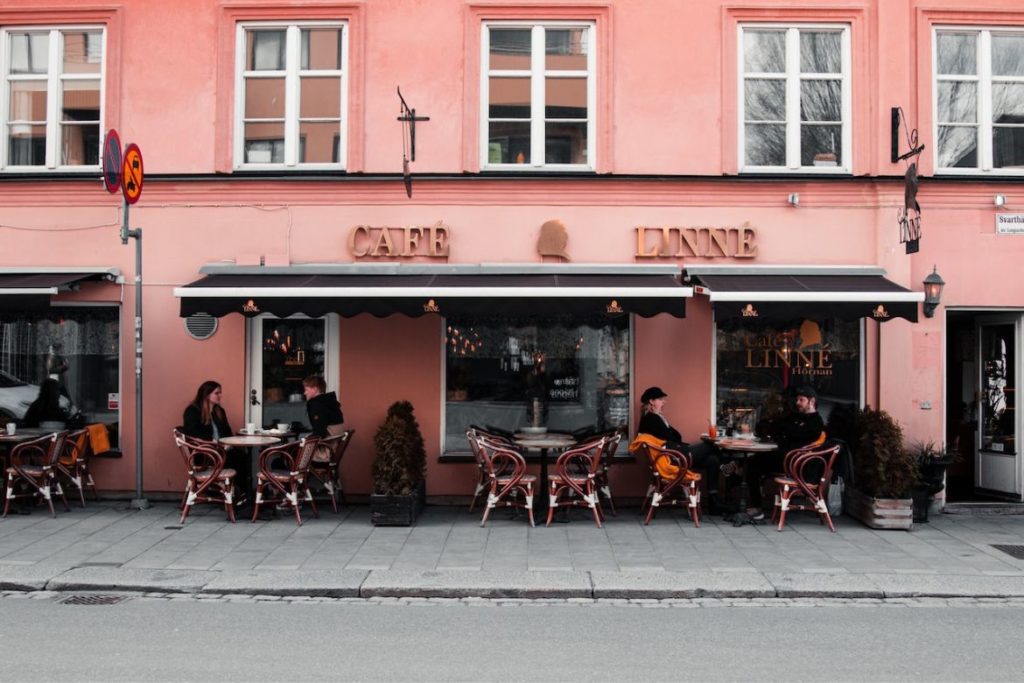
Fika Cookbooks: Create Your Own Fika Menu
If you’re not ready to hop on a plane to Sweden right now and there are no fika cafes nearby, you can easily enjoy fika at home. Here are three of my favorite fika books filled with delicious fika recipes:
Fika: The Art of the Swedish Coffee Break
Fika: The Art of the Swedish Coffee Break by Anna Brones and Johanna Kindvall: A delightful guide that explores the history, rituals, and recipes of Swedish fika through charming illustrations and engaging anecdotes.
The Little Book of Fika
The Little Book of Fika by Lynda Balslev: A compact guide that offers insights into the significance of fika in Swedish culture, accompanied by traditional and contemporary fika recipes.
Swedish Fika: Cakes, Rolls, Bread, Soups, and More
Swedish Fika: Cakes, Rolls, Bread, Soups, and More by Milo Kalén: A delightful collection of recipes for delectable cakes and pastries, allowing readers to recreate the magic of Swedish fika at home, accompanied by beautiful photographs.
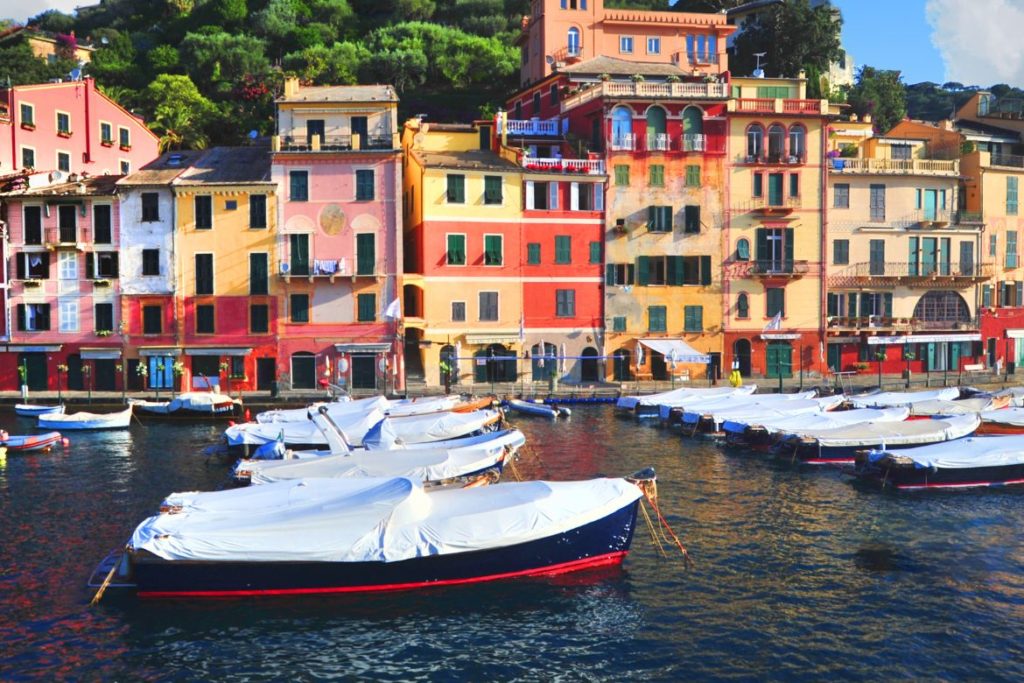
It’s Fika Time!
From the irresistible aroma of freshly baked kanelbullar to the delicate layers of a Prinsesstårta, each item on the fika menu offers a unique experience. Whether you find yourself in a cozy café in Stockholm or savoring fika at home, embracing the Swedish fika culture will transport you to a world of warmth, comfort, and indulgence. Let’s fika!
Fika Facts: Top Questions About Fika
Here are some answers to the most popular questions about fika.
Many Swedes have fika several times day! The idea is to take a break, enjoying some coffee and food with people you care about.
Pronounce fika as fee-kah, with that lovely Swedish lilt.
Coffee is the traditional fika beverage. That said, you can also enjoy fika with tea, juice, milk, etc. As a child, I didn’t like coffee but I definitely loved those Swedish pastries.
The origins of fika trace back to the 18th century, when coffee became a popular beverage in Sweden. Initially, the upper classes enjoyed fika but it quickly gained popularity among all social strata. Over time, it evolved from a simple coffee break to a cherished social ritual. Today, fika is an integral part of Swedish culture, celebrated across the country in homes, offices, and cafes alike.
Other Baked Goodies from Around the World 🍞 🥐 🥖
- Gluten-Free Irish Soda Bread
- Pan de Yuca: Colombian Cheese Bread
- Lemon Rosemary Olive Oil Cake (an Italian Favorite)

